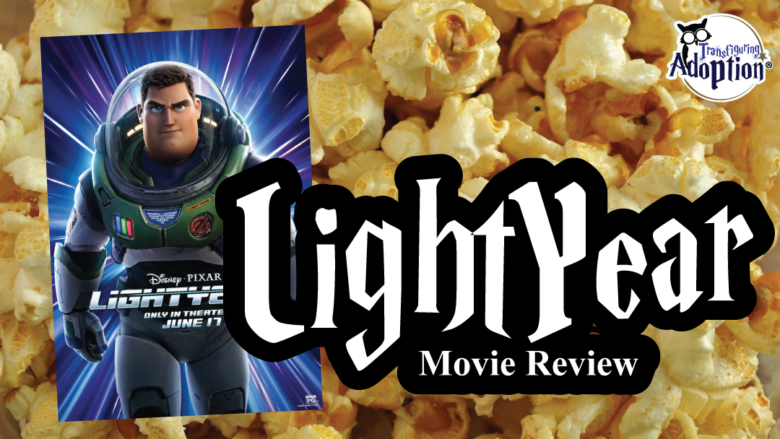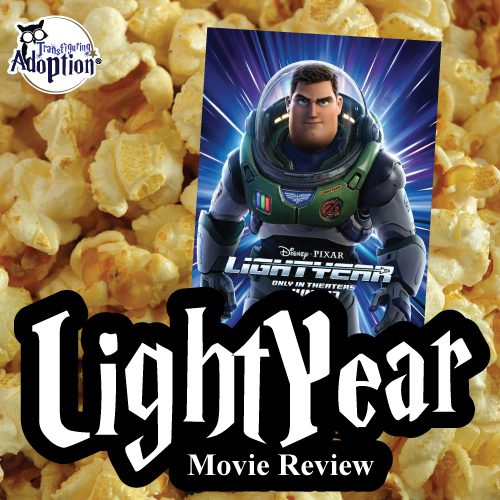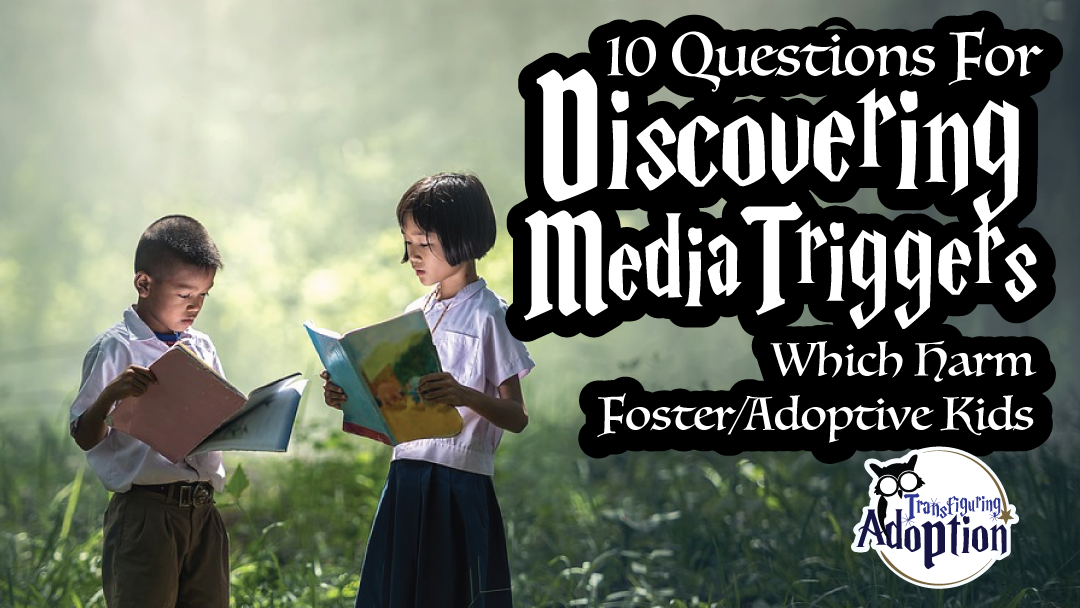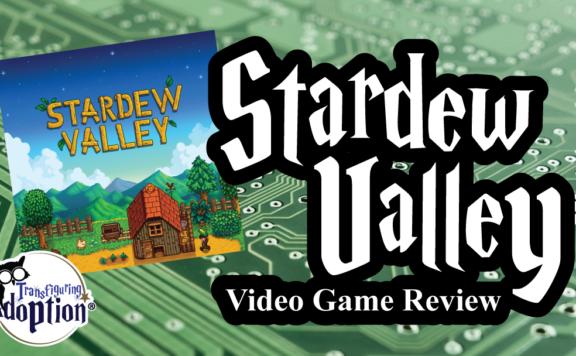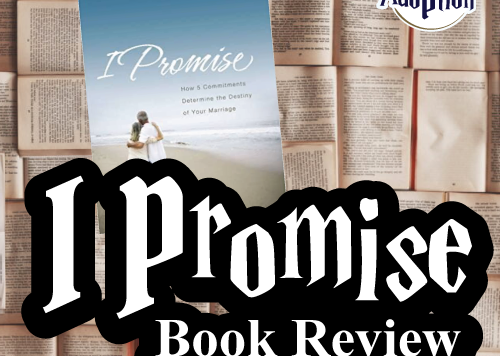Grade:
Transfiguring Adoption awarded this movie 4 Hoots out of 5 based on how useful it will be for a foster/adoptive family. [Learn more about our Hoot grading system here]
Movie Info:
-
Rating: PG
-
Genre:Comedy, Adventure, Action, Sci-Fi, Animation
-
Runtime: 100 minutes
-
Studio: Disney/Pixar
From the Cover of Lightyear by Disney/Pixar:
“Legendary space ranger Buzz Lightyear embarks on an intergalactic adventure alongside ambitious recruits Izzy, Mo, Darby, and his robot companion, Sox. As this motley crew tackles their toughest mission yet, they must learn to work together as a team to escape the evil Zurg and his dutiful robot army that are never far behind.”
Transfiguring Adoption’s Overview:
Disney/Pixar presents a prequel to the popular Toy Story franchise. This film presents the back story of popular Toy Story character, Buzz Lightyear. Lightyear, the movie, is presented to us as the favorite movie of Andy, the boy who owns all the toys from the Toy Story movies. In this movie Lightyear is an actual person (as opposed to the action figure toy from Toy Story) and space ranger, who is exploring various planets with the rest of his crew of rangers, scientists and more. While exploring a violative planet, Buzz accidentally crashes the massive spaceship that houses the small city of people exploring the universe. It is discovered that the ship can get back up and running if the proper energy source can be created by the shipwrecked scientists. Buzz, who is froth with guilt over the large group being stranded, volunteers to test out the energy source in a smaller spacecraft. The first trial is a failure and we quickly learn upon Buzz’s return to the planet that while Buzz was away for four minutes, it was really four years for all the inhabitants on the planet. Thus, we, the viewers now see that the plot of the film has to do with Buzz learning to trust other people help him and learning how to forgive himself after making a mistake. Will Buzz’s self-guilt and unwillingness to cooperate with others cost him too many years of his life?
On a personal note I thoroughly enjoyed the character introduction and creation in this movie. Pixar does a great job of introducing us to fun characters with complex personalities which we grow to love. Let me know what you thought about the robotic cat named Sox.
** Spoilers Could Be Ahead **
How Is This Relevant To Adoption & Foster Care?
Lightyear, like the majority of films made by Disney/Pixar, are intended to be watched by the general public. This film targets families with children from elementary through middle school. However, younger children and older children all the way to adults may find this to be an entertaining piece of media. Since this movie was created with the general public in mind, foster and adoptive families are not going to directly find conversational material directly dealing with their situations.
One theme that is presented in Lightyear is how a person copes with a mistake they have made. Many children from traumatic backgrounds subconsciously have a difficulty of differentiating between, “I made a mistake,” as opposed to, “I AM a mistake.” The film doesn’t quite go this far but we do witness Buzz Lightyear obsessed with righting the wrong he caused. This theme in and of itself is beneficial for families coping with past trauma, as they can discuss the fact that everyone makes mistakes but this doesn’t have to define their life.
Some other beneficial points which will be appreciated by various families are there are multiple black characters with strong roles and one character of hispanic heritage. The film also portrays a strong lead character with a same sex partner and the couple eventually is shown to have child and family of their own. This diversity will better allow various types of families to identify with characters which are similar to themselves.
Discussion Points:
- Depending on Others
Throughout the film there is a theme of Buzz having to be self-reliant. We see this as he does not like to train new space rangers, ask for help fixing his mistakes, and he even doesn’t like the auto pilot machine assisting him in flying ships. Many times children from traumatic backgrounds have subconsciously learned the false truth that they cannot rely on anyone to help them stay safe and healthy. This movie would offer a great chance for caregivers to point discuss the difficulties Buzz face as a result of his refusal to work with other people. It would also be a good chance for families to discuss the character traits of people that are safe and reliable to offer help. - Coping with a Mistake
Buzz accidentally maroons the spaceship of scientists and space explorers on a less than desirable planet. As viewers watch the movie, you will witness Buzz experiencing severe guilt over the mistake. At first Buzz wants to give up his space ranger status when we see him attempt to turn in his badge. We then see him spend the rest of the movie believing that he must find a hyper speed fuel to get the spaceship off the planet. Buzz will not accept help from others. We see Buzz project these beliefs onto other people when the character, Moe, accidentally knocks Buzz’s robotic cat off a counter and seemingly breaks it. While others comfort Moe about making the mistake, Buzz orders Moe to perform better.
Children from traumatic backgrounds frequently have similar feelings as Buzz. Life may have taught them that they don’t MAKE mistakes but that they ARE mistakes. Thus, an accident subconsciously confirms to that child that they ARE a mistake. Families will do well to discuss how Buzz’s beliefs were incorrect and how they caused him to not fully live his life. It would also be great for families to point how other characters made mistakes, owned them, and discuss how they were able to move on. Lastly, it will do families well to discuss how making a mistake doesn’t make a person less talented, less smart, or even less of a person. - Working Toward Goals/Dreams
The character of Izzy is the granddaughter of the space ranger, Captain Hawthorn. During the movie we are given the impression that while Capt. Hawthorn is unable to continue being a space ranger, Izzy has heard all about the exploits of the space rangers in the past. Young Izzy seems to want to become a space ranger. The grown up Izzy is portrayed as taking classes for being a ranger and Izzy persists in facing fears and completing tasks to work toward who goal of becoming a space ranger.
Children from traumatic pasts may find that they have great goals for their lives but may find that they lack the follow through to make their dreams become reality. It would be great for families to talk about how Izzy moved toward accomplishing her dreams. It would be a good discussion for family members to share their own goals and help each other come up with ways the goals can be achieved. Lastly, it would be worth having a conversation about how Izzy seemingly coped with setbacks to her dream. - Talents & Abilities
As Buzz leads the team of unqualified trainees, we can note that they each seem to have various talents. Izzy seems to be clever and brave while Darby appears to be good with handling the ammunitions. It can be difficult for anyone to notice their own talents and abilities. However, it can be particularly for children from traumatic past to note their talents and the talents of others around them as they are so (subconsciously) concentrated on survival. It would be good for families to have a conversation about how the abilities of the characters in the film all attributed to the success of the team. It would be interesting to converse about why Buzz couldn’t complete the mission by himself. It would good for families to transfer the conversation from the characters to talking about the talents of each family member and how it contributes to the success of the family.
Cautionary Points:
- Death of a Character
As Buzz continues to search for the correct formula that will provide the space crew the power to get off the marooned planet, he finds that he is aging at a different rate than everyone else including his good friend, Captain Hawthorn. As a result Buzz at the return of each mission he completes, Buzz finds his friend has aged four years. Upon returning from one mission viewers watch as Buzz returns to a goodbye video message from the elderly Captain Hawthorn. For children from traumatic backgrounds this might be quite troubling. Pixar does a great job of getting the audience to be connected and care for the character of Captain Hawthorn. Thus, if your child is triggered by abandonment, death, or even people leaving for a short time, you should know that this content is in this movie. - Near Loss of a Character
While watching this movie, viewers will undoubtedly fall in love with Buzz’s robotic support cat, Sox. During the film Sox is accidentally knocked off a counter and for a moment the audience believes that Sox has been broken beyond repair which is treated as though the robot died. Later on in the movie Izzy and Sox have to float from one end of a space station to the other to enter a door. They are thrown off course and a scene where Izzy has to attempt to grab onto items protruding from the space station so she doesn’t float out into the void of space ensues. We witness Izzy grabbing onto the space station at the last moment before we see Sox float by her toward open space. Izzy grabs him in the nick of time but not before we believe for a few moments that Sox is lost forever.
Caregivers should be aware of these situations, as some children may be sensitive to these near loss/death experiences and have a difficult time recovering from them. It is possible that these situations might trigger thoughts about the loss(es) they have experienced in their past.
On a personal note I will admit that I was on the edge of my seat wondering if Izzy would be able to stop Sox from floating out into space. This scene really got my adrenaline pumping. Caregivers should be aware of this also as spikes in adrenaline can subconsciously trigger a child’s body to remember negative past moments when they were in fight, flight, or freeze situations such as severe physical or verbal abuse. - Cartoon Violence
Buzz is a space ranger and space explorer. It should be no surprise that he has been outfitted with lasers, and other space tech weaponry, such as a laster sword and blaster, to battle potential violent planet lifeforms or robots. There are scenes in this film depicting giant bugs, giant vines or robots getting beat up or destroyed through the use of these high tech weapons. All battles and violence are depicted in cartoon manner and caregivers will find that the most gruesome nature will come from seeing the bugs or vines cut or explode. Caregivers should be aware of these scenes as some children might be triggered about violent acts from the past if they are very sensitive to this sort of subject matter. As with any battle scenes, caregivers should be aware that a child’s adrenaline may spike which could remind the child’s body about past times where the child had a spike in adrenaline to keep them safe from physical or verbal abuse.
Discussion Guide:
- If you had a robotic cat like Sox, what would are some of the things it could do?
Caregiver Note: This question is merely something fun for your family to converse about and learn about each others’ interests and personalities. - Buzz had a special greeting/farewell with Captain Hawthorn where they touched fingers and said, “To infinity, and beyond.” Do you have something special you say to your friends or a special handshake?
Caregiver Note: Once again we are trying to give you an idea of something to mention so that you can get a better glimpse into your child’s life and thoughts. If you had something special that you used to do with a friend in childhood, now would be a great time to share that activity. - What was the mistake that Buzz made? How did Buzz respond to this mistake?
Caregiver Note: For children from traumatic backgrounds they can have a hard time differentiating between “I made a mistake,” as opposed to, “I AM a mistake.” Over the next few questions we want to ask some questions which explore the theme of about mistakes in this movie. For this question we simply want to see that every can identify the mistake in this movie and hear each person’s take or reaction to it. The second part will allow you to gauge your children’s thoughts on how Buzz handled the situation. This is a great time for you, the caregiver, to discuss your thoughts on how healthy Buzz with handling his mistake and look at other possibilities for a solution. - How did other people respond to Buzz’s mistake?
Caregiver Note: If you haven’t read the “Caregiver Note,” from the previous question, please do so now. Many time when someone makes a mistake, caring and safe people are able to see the mistake without judgement or labeling a person with the mistake. It would be good for families to foster conversations highlighting the fact that the mistake had real consequences but that no one labeled Buzz as a mistake. In fact it would be great to discuss the fact that the whole crew of space explorers allowed him to take charge of the fuel test flights. These conversations will be good for children from traumatic backgrounds. Many of our children not only label themselves by their mistakes but label themselves based on their past trauma. It is healthy for them to see a character in a movie wrestle with something similar as themselves and see that other people are still viewing Buzz as a talented, and vital member of society. - How did people respond when Mo’s accidentally broke Sox?
Caregiver Note: If you haven’t read the “Caregiver Note,” from the question 2, please do so now. This would be a good time to compare how Izzy and the gang comfort Mo as opposed to Buzz telling Mo to do better. While our children might have a difficult separating their actions from who they truly are, they may have a difficult time knowing how to have compassion and empathy. This should be a time to discuss how a person can respond to an accident made by another person in a healthy manner. - Would you eat a sandwich like Mo, Darby, and Izzy liked to eat? Why or why not?
Caregiver Note: This is simply a fun conversation to discuss the movie and learn more about each member of the family. Some children from traumatic backgrounds were malnourished or not introduced to many varieties of food. Thus, a child might be a picky eater or have sensory issues surrounding food. It could be that discussing this question might reveal some of those issues/preferences. As a fun activity you might try making a sandwich like in the movie (two slices of meat and bread in the middle of the slices of meat) as a fun way to discuss this question and see reactions. - What did Izzy want to become? How was she trying to achieve that goal?
Caregiver Note: Children from traumatic backgrounds can sometimes have a difficult time with thinking about the future when they have taught themselves to only be concerned about survival in the present. These questions will allow you to converse about Izzy’s goals for the future and her steps to get there as a way of exploring someone else’s plans. - Activity: The Once a Week Plan
-
- As a family decide on a task the family wants to complete once a week; write the goal out on a piece of paper
I.E. Try a new board game, try a new type of cookie/food, go for a walk, etc.
(Caregivers may wish to have three to five fun options for the family to choose from beforehand to assure that the decision is something viable and doable for the family to successfully achieve) - As a family, discuss the possible obstacles that will keep you from attaining this goal and write these on a second piece of paper
- While looking over the goal and obstacles, talk about the ways in which your family can plan to accomplish the weekly goal together
I.E. homework should be done before Friday nights at 7pm to play a new board game; help mom check for the ingredients to make a new kind of cookie on Thursday - Decorate the goal sheet
- When your family completes the weekly task, add a sticker/stamp/marker of some sort to show off your family’s accomplishments.
Caregiver Note: Since many children from trauma backgrounds are stuck in “survival mode,” they do not have a lot of practice making plans for the future and carrying them out. This small activity is a great way for your family to create a goal together, practice making steps to attain the goal, and then accomplishing it together.
- As a family decide on a task the family wants to complete once a week; write the goal out on a piece of paper
-
- Captain Hawthorn seemed to have a good and full life even though she was marooned on the alien planet. Why do you think she chose to live out her life instead of obsessing about leaving the planet?
Caregiver Note: Captain Hawthorn went through the same traumatic experience that Buzz experienced; they both were marooned away from their home planet and on an alien planet. Buzz chose to obsess about leaving the planet while Capt. Hawthorn got married, had a family, and lived what most would consider to be a full life. Our children from trauma backgrounds have also had something horrible happen to them in their pasts. This question should allow you to converse about what it looks like to live a full life despite a traumatic event in our past. Note that we are not asking them to ignore or forget their past but simply have a conversation about being able to have a successful life despite what has happened to them in life. - Buzz eventually befriends Izzy, Mo, Darby, and Sox? Why were they good friends? How can you tell if your friends are good friends or not?
Caregiver Note: Children from trauma backgrounds may not have had an adult that modeled the way to make and keep healthy friendships. Thus, it can be difficult for our children to recognize if someone is taking advantage of them or even bullying them. These questions should allow your family to open up a dialogue about healthy friendship traits and allow you to talk to your child about healthy/unhealthy traits you see amongst the people they know.
About the Author: Darren Fink
Co-founder and President of Transfiguring Adoption. Darren is a graduate of Illinois State University where he studied fine art. He offers foster and adoptive parents over a decade of experience in parenting foster and adoptive children, as well as his introductory to counseling training. Darren is the author of the [“A Guide to Magical Creatures Around Your Home,”] book series.
**Transfiguring Adoption is a nonprofit organization seeking to nurture growth in foster and adoptive families by giving a HOOT about their families. Transfiguring Adoption does not intend for its reviewers nor its review to be professional, medical or legal advice. These reviews and discussion guides are intended to help parents to better be able to connect and understand their children who come from traumatic backgrounds.
